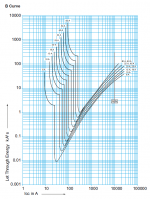yesterlectric
Senior Member
- Location
- PA
- Occupation
- Electrician
Wondering about this fine print note below 240.4:
- See ICEA P-32-382 2007 (R2013), Short Circuit Characteristics of Insulated Cables, for information on allowable short-circuit currents for insulated copper and aluminum conductors.
Is this to suggest that the standard would require more than ampacity consideration for conductors and overcurrent, and would require one to consider the momentary current that a conductor will carry before the breaker operates during a short circuit event, and possibly upsize conductors accordingly? Never had to do this before. Wouldn't think it's standard on less than 1KV applications. And if I only could afford to buy each standard the informational notes suggest..........................................................................................................
- See ICEA P-32-382 2007 (R2013), Short Circuit Characteristics of Insulated Cables, for information on allowable short-circuit currents for insulated copper and aluminum conductors.
Is this to suggest that the standard would require more than ampacity consideration for conductors and overcurrent, and would require one to consider the momentary current that a conductor will carry before the breaker operates during a short circuit event, and possibly upsize conductors accordingly? Never had to do this before. Wouldn't think it's standard on less than 1KV applications. And if I only could afford to buy each standard the informational notes suggest..........................................................................................................



